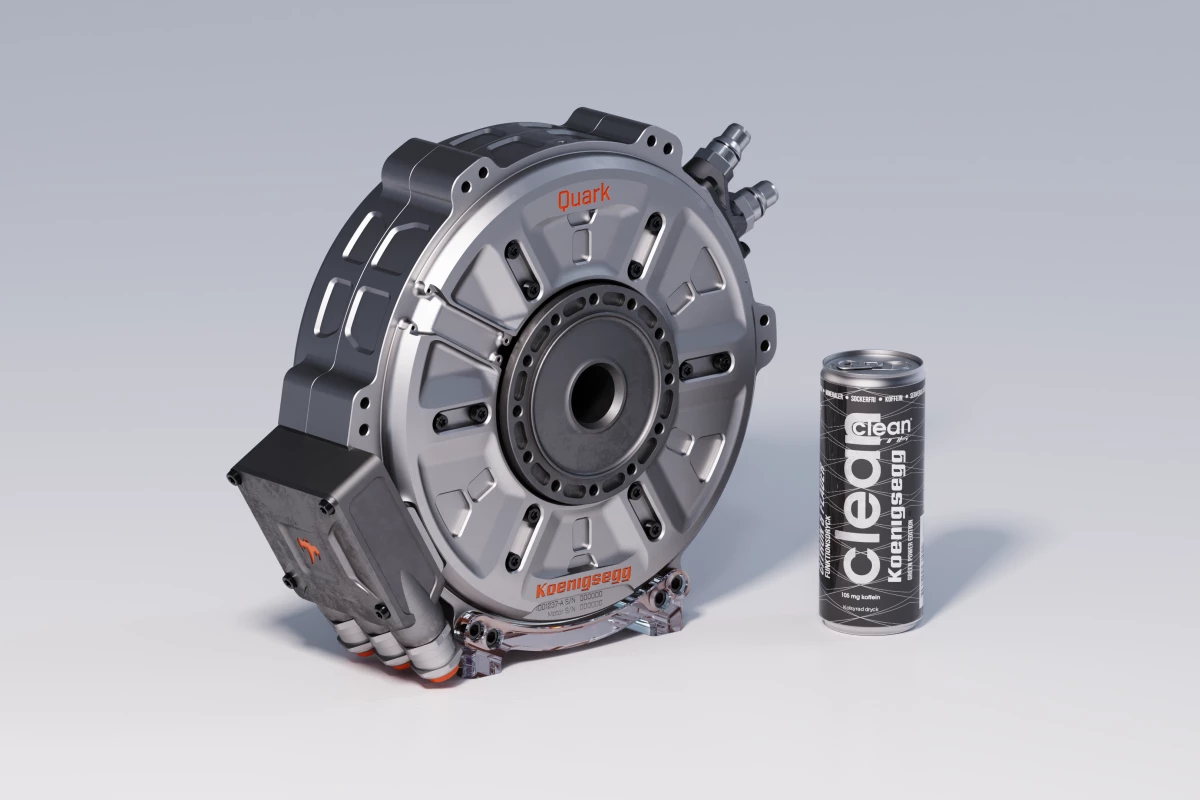
Posted on 02/02/2022 10:29:47 AM PST by Red Badger

The compact, flat Koenigsegg Quark motor is designed to integrate easily into supercars and other vehiclesKoenigsegg VIEW 8 IMAGES
Not one to let the inadequacies of existing technology stand in its way, Koenigsegg has been an innovating pioneer in modern powertrain technology, rethinking fundamentals with solutions like gearbox-free direct-drive hybrids and camshaft-free engines. Its latest breakthrough has come in the form of a compact electric motor that squeezes together the torque-heavy benefits of axial flux topology with the power-dense boost of a radial flux layout. The all-new Quark motor will help the boundary-smashing Gemera four-seat GT achieve sprint times formerly reserved for the world's quickest electric coupes while supporting a wide range of applications from aerospace to marine.
Developing the world's first "mega-GT," a four-seat grand tourer with power and performance figures to rival the world's most expensive, overpowered hyper-coupes, is no easy task. Koenigsegg continues to approach it by shrinking down its powertrain, work that started with shoehorning 590 hp into a 2.0-liter three-cylinder fossil free-fuel engine it calls the "Tiny Friendly Giant." It's always planned to configure that engine within a gearbox-free Koenigsegg Direct Drive (KDD) layout, using three complementary electric motors. This week, it's provided a closer look at what the small, potent e-machines will look like.
Koenigsegg applied principles from existing radial flux and axial flux motors to develop what it calls Raxial Flux topology. It doesn't explain what exactly that combination looks like in practice, but it does promise the best torque-to-power-to-weight ratio in the industry. The Quark motor's 8.5 kW/kg power-weight ratio doesn't exceed previously set benchmarks, but the 66-lb (30-kg) motor really shines in its 443 lb-ft (600 Nm) of peak torque.
(Excerpt) Read more at newatlas.com ...
That is true, but motors will get smaller, lighter and more powerful, just as IC engines did in the early 20th Century.
I predict the emergence of ultra-magnets that are very small, super strong and not made of rare earth metals.
Super Capacitors/Batteries will charge in minutes, not hours and since the electric cars will have much less parts and therefore less labor, they will be cheaper...........
The innovations that the Koenigsegg team develop are truly amazing. That is a talented bunch of engineers.
And they can be STACKED!.....................
What I found remarkable as well as interesting about this company is that just about all or most components are designed, developed and produced in house. There are some interesting YouTube movies about this remarkable company, worth watching.
Paging John Galt. Please pick up the courtesy phone in the lobby.
5.56mm
I just read that Indycar is using supercaps in their new hybrid drivetrain from Mahle.
Windmills, solar panels and unicorn farts, silly!..................
Yeah 300hp/liter is race car spec.
Hi.
A miss print.
It’s nana meters. The distance between you and your nana.
Where she can bop you on your head.
5.56mm
The graph shows foot pounds. The conversion is indeed to Newton meters
Now if they would just get to work on a Racial Flux version that could take us a fair distance for an equitable charge...
No. The graph is in foot pounds
Nanometer is a length not an energy value. Newton meters is appropriate
Don’t even get me started on Kilo/Pascals.
L
Super Capicitors have been 10 years away for 40 years. It might happen, but really hasn’t yet.
Being consistent (?) the graph has “TORQUE (NM)” on the left side.
Many experimenters have replaced car batteries with a deck of super capacitors that take up less than half the space and can weigh as little as one third of a conventional battery. Also, they tolerate temperature extremes better than most battery types. I built one for about $40.00 and also built a backup deck that fits in one of the pockets in the rear of my van. Fantastic money-saving device!


short video explaining axial fkux motors in comparison to common radial flux motors and why axial flux has greater torque to weight advantage.
Disclaimer: Opinions posted on Free Republic are those of the individual posters and do not necessarily represent the opinion of Free Republic or its management. All materials posted herein are protected by copyright law and the exemption for fair use of copyrighted works.